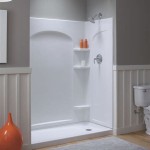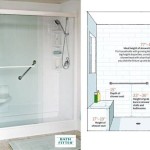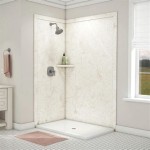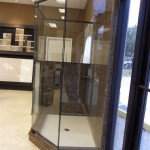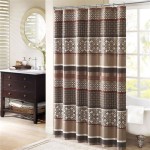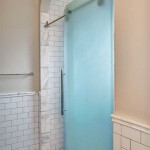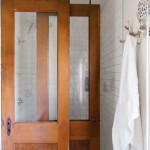Investigating Low Shower Water Pressure in Bathroom
A refreshing shower is an essential part of daily routine, but low water pressure can turn it into a frustrating experience. If you're facing this issue, it's important to identify the cause to find the most effective solution. Here's a guide to help you investigate and address low shower water pressure in your bathroom:
1. Check Water Pressure Throughout the House
First, determine if the low pressure affects other faucets or fixtures in your home. If so, it's likely a problem with the overall water supply. Check the main water valve to ensure it's fully open. If not, open it completely and observe if the pressure improves.
2. Inspect Showerhead and Fixtures
The showerhead itself can accumulate mineral deposits over time, reducing water flow. Remove the showerhead and soak it overnight in a vinegar solution to dissolve buildup. Rinse thoroughly before reinstalling. Also, check the shower hose for any kinks or blockages.
3. Examine the Pressure Regulator
A water pressure regulator is installed to control the flow of water into your home. If it's faulty or set too low, it can cause low water pressure. Locate the regulator, usually near the water main, and adjust it slightly by increasing the pressure setting.
4. Check the Aerator
Many showerheads have an aerator installed to introduce air into the water stream, creating a more forceful spray. However, a clogged aerator can restrict water flow. Remove the aerator, clean any debris, and reinstall it.
5. Evaluate the Water Heater
If only your hot water has low pressure, the issue may lie with the water heater. Ensure the heater is set to the correct temperature and that it's functioning properly. Sediment buildup in the heater can also reduce flow. If necessary, consider flushing the heater to remove sediment.
6. Inspect Pipes and Valves
Corroded or leaking pipes can impede water flow. Examine the pipes leading to the shower for any visible damage. Check if any valves controlling the water supply to the shower are closed or partially closed.
7. Contact a Plumber
If all these steps fail to resolve the low water pressure issue, it's recommended to contact a qualified plumber. They have the expertise and tools to identify and fix the problem more effectively. They can check for hidden leaks, replace faulty components, or recommend other solutions.
Investigating low shower water pressure requires a systematic approach to identify the underlying cause. By following these steps, you can diagnose the issue and find a suitable solution to restore optimal water flow to your bathroom.

How To Improve Low Water Pressure In Your Shower America S Preferred Home Warranty

5 Reasons For Low Water Pressure In The Shower Ohio Buckeye Plumbing

What Causes Low Water Pressure In The Shower Benjamin Franklin Plumbing Bay Area

Low Water Pressure Try These Troubleshooting Tips Markjohnsonplumbing

How To Increase Water Pressure In Shower Fischer Plumbing

Why Is Your Shower Water Pressure Dropping My Buddy The Plumber Electric Heating Air
Why Is There Low Water Pressure In The Shower But Not Rest Of House Quora

How To Test Your Home Water Pressure Benjamin Franklin Plumbing

Improving Shower Water Pressure

My Showerhead Has No Pressure How To Fix It Fixed Today Plumbing
Related Posts

